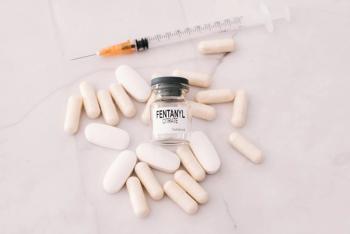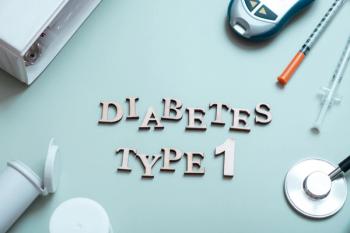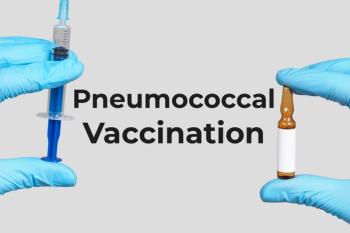
- Drug Topics November/December 2024
- Volume 168
- Issue 08
Truth or Trend? Equipping Patients to Combat Misinformation
Pharmacists can monitor what health information circulates in mainstream media. But how can they rebut misinformation spread in private channels?
The COVID-19 pandemic instilled in many people a greater awareness of health and well-being. But with physicians’ offices closed and health care professionals overwhelmed, the internet emerged as a central resource for all things health—often replacing typical provider guidance. It became one of the first places people learned about stay-at-home orders, vaccine developments, and quarantine updates. Social media platforms such as Facebook, Instagram, and X (formerly Twitter) also provided an essential space for connection during a period of isolation and anxiety. Although these channels were a helpful platform for sharing accurate information, they also contained an information vacuum, which when coupled with a surge in screen time and a lack of professional oversight, expanded a world wide web where misinformation could thrive.
It is out of this internet that various claims emerged, some about vaccine microchips or miracle cures, and others about bioweaponry, all reaching millions of online users. One study found that among a sample of 1500 tweets analyzed for COVID-19 misinformation by professional fact-checkers, 1274 were false and 226 were partially false assertions, demonstrating the pervasiveness of the issue during this period.1
A flood of conflicting information can create a dangerous chain reaction: Confusion contributes to skepticism and distrust, leading people to disregard public health measures and delay seeking necessary care. This, in turn, translated to real-world harm: Rumors promoting the ingestion of alcohol-based cleaning products as a cure for COVID-19 were linked to 800 deaths early in the pandemic.2
READ MORE:
Despite its dominance during the COVID-19 public health crisis, the misinformation phenomenon predates the pandemic. Even after being addressed with science-backed evidence, misconceptions—for example, that vaccines cause autism3 or that sexually transmitted diseases can be caught through public toilet seats4—persist. Pharmacists can keep a finger on the pulse of what circulates in mainstream media, but how can they control misinformation spread in private channels?
In public forums, safeguards such as fact-checking labels or content moderators may help quell misinformation. In private spaces—such as closed social media groups, encrypted messaging apps, and personal group chats—unfiltered information can spread quickly. To combat the negative effects of this misinformation, pharmacists must equip themselves and their patients with the skills necessary to critically consume health information.
Just like SARS-CoV-2 itself, misinformation is contagious. Humans are social learners; a post that gets reshared by a friend or family member is automatically perceived as more credible due to the nature of the relationship between the user and the sharer.5 Moreover, the vast reach of social media makes it even more difficult to stop the spread. With just a few reposts and likes, 1 post can reach thousands of users—and even if the original post is removed, it can be repackaged and shared through different channels. Over time, repeated exposure to misinformation can make it seem as real and believable as established facts.6
For pharmacists and other health care providers, the best way to address misinformation is by respecting patients’ perceived realities, rather than meeting them with judgment—the latter has harmful consequences. An email survey conducted of 15,800 physicians across the United States found that the 2 most common characteristics in patients that elicited bias in physicians—and that caused them to pass judgment onto patients—were patients’ emotional problems or weight; another major trigger was how the physicians perceived patients’ intelligence.7 Feeling judged can lead patients to be less engaged in their health care or to withhold relevant information about their lifestyle habits or behaviors, which affects their outcomes.
Since pharmacists are often the first point of contact in primary health care, validating the patient’s perspective is crucial to reduce the transmission of bias to other clinicians. Avoid using medical jargon or a condescending tone that may alienate patients and make them feel less receptive to accurate information. Ask probing questions and summarize patient answers to confirm that the interpretation of information is accurate. Establishing a trustful relationship between the pharmacist and patient fosters open communication where patients feel comfortable asking questions and voicing their concerns.8
This trust allows pharmacists to support patients outside of the pharmacy, such as by providing external resources to sustain learning. Create a designated section of a pharmacy website or a social media profile to provide patients with credible health information around the clock. This content may include short videos on specific health topics, curation of articles from reputable organizations on common conditions or medications, interviews with health care professionals discussing health trends, or a frequently asked questions page.
In addition, pharmacists can discuss tips for spotting unreliable health care information with patients on their own time. If viewing information shared by other people, suggest that patients ask the sharer where they got that information. If it is not a reputable health organization, government agency, or medical journal, tell them it may not be true. Encourage patients to cross-check information with other reputable websites and to make sure that the information has been posted recently.
Further, advise patients to beware of sensational claims. If the information sounds too good to be true, it probably is. In the same vein, tell patients to look for bias that indicates the source may be prioritizing selling a health care product or service rather than promoting well-being. Recommend trustworthy websites for patients to reference beyond the pharmacy, as well as to share with their network.
In the post-pandemic information age, health misinformation is getting increasingly difficult to discern. Pharmacists, as the most trusted and accessible health care professionals, must be diligent in combating it. By fostering open communication, establishing a strong informative presence, and empowering patients with critical thinking skills, pharmacists can equip patients to make informed decisions about their health and digital intake.
READ MORE:
Don’t get left behind: Sign up today for our
References
1. Shahi GK, Dirkson A, Majchrzak TA. An exploratory study of COVID-19 misinformation on Twitter. Online Soc Netw Media. 2021;22:100104. doi:10.1016/j.osnem.2020.100104
2. Islam MS, Sarkar T, Khan SH, et al. COVID-19–related infodemic and its impact on public health: A global social media analysis. Am J Trop Med Hyg. 2020;103(4):1621-1629. doi:10.4269/ajtmh.20-0812
3. LeGare J. Link between autism and vaccination debunked. Mayo Clinic Health System. March 24, 2022. https://www.mayoclinichealthsystem.org/hometown-health/speaking-of-health/autism-vaccine-link-debunked
4. What can you catch in restrooms? WebMD. Accessed July 16, 2024. https://www.webmd.com/balance/features/what-can-you-catchin-restrooms
5. Majerczak P, Strzelecki A. Trust, media credibility, social ties, and the intention to share towards information verification in an age of fake news. Behav Sci (Basel). 2022;12(2):51. doi:10.3390/bs12020051
6. Hassan A, Barber SJ. The effects of repetition frequency on the illusory truth effect. Cogn Res Princ Implic. 2021;6(1):38. doi:10.1186/s41235-021-00301-5
7. Peckham C. Medscape lifestyle report 2016: bias and burnout. Medscape. January 13, 2016. Accessed July 16, 2024. https://www.medscape.com/slideshow/lifestyle-2016-overview-6007335
8. Esmalipour R, Salary P, Shojaei A. Trust-building in the pharmacistpatient relationship: a qualitative study. Iran J Pharm Res. 2021;20(3):20-30. doi:10.22037/ijpr.2020.114113.14675
Articles in this issue
11 months ago
OTC Product Roundup: Sleep Aids11 months ago
It’s Time to Staunch Our Self-Inflicted Wounds11 months ago
A Look Back at the Affordable Care Actabout 1 year ago
Q&A: Pharmacists Champion Nonopioid Pain Management StrategiesNewsletter
Pharmacy practice is always changing. Stay ahead of the curve with the Drug Topics newsletter and get the latest drug information, industry trends, and patient care tips.





















































































































































